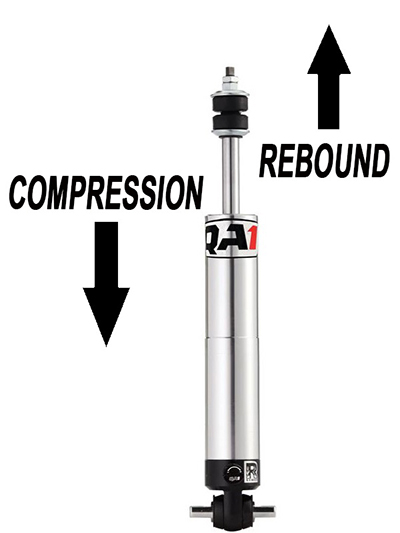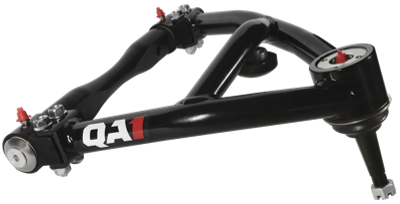Shock Valving: What is Compression and Rebound?
Shocks make a huge difference in the way your car rides, handles and performs. All of that comes down to two simple movements: compression and rebound. These two attributes affect everything from body roll and bumps in the road, to the way a drag car leaves the starting line. Let’s take a look at both.

What is shock valving?
First of all, let’s go over shock valving as a whole. Simply put, valving determines how much force it takes to compress or extend a shock. Some shocks have fixed valving, meaning it is not adjustable. Your valving is set at the factory and cannot be changed.
Other shocks allow you to tune the valving to your preferences or driving style. Single-adjustable shocks change both compression and rebound with a single knob. You can stiffen the shock overall, or you can soften the shock overall.
Double-adjustable shocks offer more tunability. You can use one knob to adjust rebound and another knob to adjust rebound. This allows you to make small tweaks and really dial in the characteristics of your ride quality and performance. This is especially important if you frequently use your vehicle for track days, drag racing or autocross events.
What is compression?
Compression is the amount of force it takes to—you guessed it—compress a shock. Imagine a shock is fully extended and you try to squeeze it together. The force pushing back against your hands is determined by the compression valving.
In a street car, compression plays a big role in absorbing bumps and imperfections in the road. It also helps keep your car stable at high speeds and prevents body roll during cornering. If you have too much compression valving, your ride might feel very harsh or jarring. If you don’t have enough compression valving, your vehicle might feel too soft, making it spongy or unresponsive.
What is rebound?
Pretend you have a shock in your hands again. If it’s fully collapsed and you extend it, the force that keeps the shock from instantly pulling apart is determined by the rebound valving.
Like compression, rebound is crucial to the way your vehicle behaves. If you don’t have enough rebound valving, your shocks won’t properly control the movement of your springs. For instance, rebound plays a big part in controlling your car’s body roll. Adding rebound allows your car to absorb bumps during compression but keeps the shock from extending too easily during cornering.
Imagine you’re taking a sharp right turn. Increasing rebound valving can keep the left side of the car from rolling over. This is obviously a balancing act, and too much rebound can definitely make your ride quality harsh.
When should I adjust compression and rebound valving?
If you have adjustable shocks, whenever you want! The whole point of having adjustable shocks is tuning them to your preferences and intended use. Don’t be afraid to start twisting knobs and feeling the difference.
If you have a drag car, adjusting your shock valving offers a lot of flexibility. For instance, it can help you tune your launches. Turning down the rebound can help you transfer weight to the rear more quickly and gain bite during launch. Adding compression can help your front end drop more slowly, ensuring you don’t break the tires loose down the track or slam your oil pan into the track as weight moves back to the front end.
In a handling application like road racing or autocross, you might turn both your compression and rebound up to control body roll. This will keep the car flat during cornering. Just make sure you don’t make the suspension so stiff that it can’t properly react to the surface you’re on. This can cause your tires to lose contact with the road when encountering bumps, curbs or other changes in the track.
Still have questions?
Our tech team is happy to help answer any additional questions you may have about shock valving, whether you already have a set or are eyeing some new QA1 coil-overs. Give us a call at 952-985-5675.

